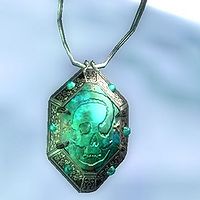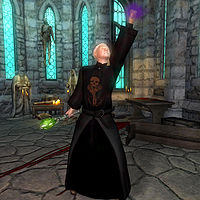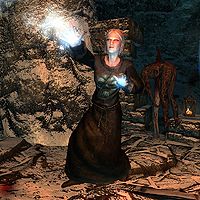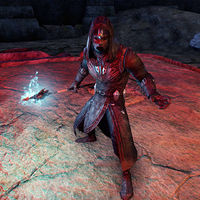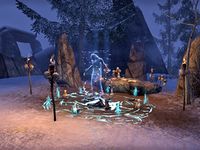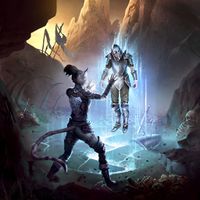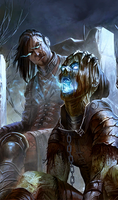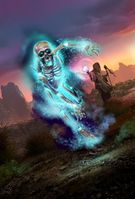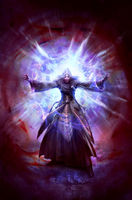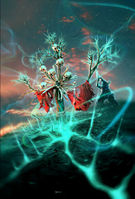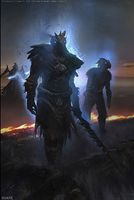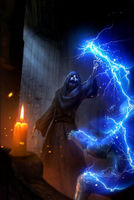Lore:Necromancy
Necromancy, also called the Necromantic Arts, Dark Arts, or Dark Practice, is the manipulation of the souls or corpses of the dead.[1][2] Dragons know it as alok-dilon.[3] Practitioners of the Dark Arts are known as necromancers (or necros in the common parlance).[4] Different groups and cultures have varying positions on what exactly constitutes necromancy. In its broadest sense, necromancy can be understood as any form of soul manipulation.[5] Some might consider it a subset of the conjuration school of magic, as both involve the summoning of spirits and utilizing the powers of Oblivion.[6] However, necromancy is more generally understood to connote the manipulation of the souls of mortals and the reanimation of their corpses,[2] leading some to consider them two different schools.[7] Some consider it a part of death magic, its own distinct school.[8][9] Typically, this soul manipulation is accomplished by binding a soul to a physical form which has been prepared by the necromancer.[10]
Necromancy has generally been considered immoral in most cultures, and sometimes even illegalized, as it is believed to contravene the natural process of life and death and violate the sanctity of spirits. However, there have been significant exceptions, and the relative risks and merits of Necromancy have been a controversial subject for centuries.[1][11][12] Much of the knowledge of it is often attributed to Daedric influences, specifically Molag Bal.[2] Molag Bal is also the father of vampires, undead creatures who often practice and have a heightened affinity for necromancy, or work alongside necromancers.[13][14] Vampirism is sometimes considered to be directly related to necromancy.[2][15][16][17]
Advocates of the Dark Practice decry its censorship, some lamenting the sacrifice of knowledge at the altar of public opinion.[1][11] One argument they've been known to give is that attaining a proper and ethical understanding of necromancy is vital to best combat the menaces who have given the practice such an infamous reputation. They downplay the dangers associated with it, and criticize what they see as the fictional divide between necromancy and some other schools. Conjuration, Enchantment, Mysticism, and possibly others have some link to necromancy. Opponents emphasize that it is not censorship, but caution and ethics which demand that necromancy be prohibited to all but the wisest and most trusted mages, and then only to combat the exercise of the Dark Practice by others. They also highlight that any institution of magic risks its own survival by disregarding the overwhelming public sentiment against necromancy, and that it is simply impossible to "dabble" in the practice without corrupting one's own soul, as even the simplest of spells require the spilling of blood. Thus, despite the intertwined nature of the schools, any study of necromancy is inherently too extreme to be wise, and delving into it virtually guarantees the destruction of the practitioner.[1]
The Dark Practice[edit]
The soul, or animus,[18] is the animating force of the universe found in all creatures. The mysteries of this force are not just unknown to mortals, they are unknowable as they transcend the limits of mortal knowledge. Every mage who has tried to unlock the secret behind souls has vanished without a trace. However, mages need not know their secret in order to harness their energy. While modern students of conjuration are content to harvest and utilize the "white" souls of lesser creatures, necromancy is the branch of the arcane arts which is concerned with the harvesting and use of the "black" souls of mortals.[19] Individuals from all civilized races in Tamriel have practiced necromancy. Some of the more intelligent uncivilized races, such as goblins, have also demonstrated an aptitude for it.
Masters of necromancy can reanimate long-dead subjects, though most practitioners require a fresh corpse, typically someone who has been dead for no more than three days. Attempting to raise minions without proper knowledge and training can result in an incomplete binding of the soul, leading to a break in the master-minion relationship and allowing the reanimated corpse to turn upon the necromancer.[20]
Some necrotic spells require the remains of the elderly due to the high levels of necrotic energy that is produced by the natural decay of life. According to one necromantic theory, the older a living being becomes, the more necrotic energy it naturally acquires while the body grows old and the life inside it decays.[21]
Necromancy draws the eye of people from many paths, such as the pursuit of power. Throughout history all over Tamriel, protectors of the people have been forced to seal off and abandon crypts rather than contend with the hordes of undead which necromancers have raised within.
Necromancers have long sought to refine their skills and find new ways to utilize their craft. How necromancy is practiced is ultimately determined by the practitioners' goals, capabilities, and morality. Many simply want power. Skilled necromancers can summon whole armies of undead, given enough resources.[14] It's typical for necromancers to have specific scientific experiments and objectives they are pursuing (at the start, at least). Necromancy also attracts sadists who are simply seeking the thrill of inflicting pain, and many necromancers who do not start out this way eventually give in to the soul-corrupting effects of the Dark Practice.
One of the driving motivations behind necromancy is the pursuit of resurrection. Many necromancers take up the craft because they are desperate to bring back the people they loved.[22][23][24] While tales suggest some necromancers have delved into resurrection with a small measure of success, as they can bind a soul back into the same body which held it in life, achieving "true" resurrection is not within their purview.[25][26]
Necromantic Minions[edit]
Among the many things necromancers have learned over the eras is that the ability of a necromancer's servant to follow directions seems to be related to the servant's intelligence in life. Therefore, performing necromancy on animals produces guard dogs at best, or instruments of the summoner's destruction at worst. Skeletons must be properly prepared before they are reanimated, otherwise they could be structurally unsound. All of the crucial bones must be present and placed correctly. Necromancers also employ a variety of means to fasten together and reinforce the skeletons at strategic points so they can move properly. While most undead can be raised again and again, skeletons are relatively fragile, and can rarely be animated more than once.[27] Necromancers often show a preference for skeletons, though, because they are cleaner than zombies and similar fleshy thralls, and they are swifter in a fight.[28]
Necromancers often employ animals, such as mudcrabs in Morrowind, to strip unwanted flesh off of corpses. If a corpse is too decayed to be used properly, but would prove a suitable servant as a skeleton, necromancers can simply dump the body near a marsh and allow the local creatures to prepare the bones for them. Necromancers have found ways to reanimate moderately decayed and even dismembered corpses by using leather straps to fit parts back together and catgut to stitch up gashes.[27] It's even possible to reanimate a body which has been cobbled together from the living flesh of multiple creatures.[29] Still, these "zombie" servants are relatively dull-witted and weak. If a necromancer invests a little time and effort, he can mummify a corpse. After soaking the body in a salt bath for at least a month, the vital organs are removed, and the body is wrapped in linen. Once the corpse is reanimated, the result is a stronger, more durable servant which is more capable of understanding commands and taking independent action.[27]
Necromancers have developed a great deal of innovative ways to manipulate souls. For instance, a necromancer can reanimate a corpse by conjuring frost around a human corpse, and then imbuing a loyal spirit into the frost instead of the body. The resulting servant can only perform the most basic tasks, but requires relatively little necromantic knowledge to create.[30]
The Path of Lichdom[edit]
Relatively few necromancers have succeeded in turning themselves into liches, but many of them believe that achieving a state of lichdom is the ultimate goal of necromancy. Scholarly works and folk tales alike speculate on how one might become a lich. There is only one path which is somewhat well-known, and even then, most details remain well-hidden.[31][nb 1][nb2]
Ascending to lichdom is a risky endeavor, unique in some ways to each necromancer who attempts it.[31] It requires extraordinary willpower and necromantic knowledge, as well as a magical relic of great power and a plentiful amount of living souls. The necromancer casts a powerful necromantic spell on his subjects, using the magical relic as a casting focus. The spell is designed to steal living souls in an incredibly painful process. This is intentional, not incidental: for the rite to work, the soul must be wrenched from its body as painfully as possible. Collecting and egregiously torturing an abundance of souls in this manner is said to be crucial in the "ascension" to lichdom.[32]
Another important facet of becoming a lich is that the necromancer must transfer their own soul into a physical object. Tamrielic folklore has long acknowledged this, but tales often perpetuate the misconception that a lich can be killed by destroying that physical object. In truth, the necromancer is only dependent upon the object holding their soul during the transference (the length of which varies with each necromancer). Once the transference is complete and the necromancer's soul has left his body, the ascension to lichdom is completed, and the physical object holding the soul becomes inconsequential.[31] The lich is born: a corpse that is self-reanimated by the soul it bore in life.[2]
If, however, the object holding the necromancer's soul should be lost or destroyed before the transference is complete, this ascendancy to lichdom would fail, and the necromancer would immediately die. Necromancers have been known to perform a nearly week-long ritual as part of their ascendancy, wherein they create a special hourglass known as the Sands of Resolve to act as the receptacle for their soul.[31][33]
Benevolent Necromancy[edit]
- "The magical art of reanimating and communing with the dead. Most people find its coercive aspects abhorrent—I certainly wouldn't argue with that. Necromancy doesn't have to include thralldom." —Vastarie
The Legend of Vastarie centers upon a contemporary of Vanus Galerion and Mannimarco who sets an interesting example as a compassionate necromancer. While Mannimarco sought power through the direct application of necromantic energies, Vastarie sought, and found, a way to delay the release of a sentient soul upon death so that it might be consulted, and its knowledge recorded for the ages, before it was peacefully allowed to enter Aetherius (as opposed to permanently binding it in an enchantment). She achieved this through the creation of Sigil Geodes, to be used as an alternative to black soul gems.[10]
Working with subjects who have died a natural death is preferred by many necromancers, if for no other reasons than it takes less effort and attracts less attention.[27] It seems that Vastarie, though, actively sought to avoid tormenting or permanently binding souls, and her aim seemed to be to benefit society rather than accrue power for herself. She could not abide Mannimarco's goals for the Dark Practice, but she also found that Galerion would not tolerate her experiments in the Mages Guild, despite the safeguards against abuse she had developed. She managed to gather a small group of students, but Mannimarco's burgeoning underground network and promises of power proved much more effective at recruitment. Vastarie eventually disappeared, and her former friend's cruel brand of necromancy continued to spread through Tamriel.[10]
The treatise On Necromancy seems to encourage a brand of necromancy that is considerate of the welfare of the souls being affected. While most texts on necromancy encourage novices to begin on fresh corpses,[27] On Necromancy discourages this because the "original owner" remains tethered to the body for days, months, or even years after death. This "spiritual umbilicus" weakens over time, but the stronger it is, the greater the fight the original owner can muster against the necromancer. The necromancer can typically win this battle, but regardless, the original spirit would be tormented.[nb 3]
Another example of responsible necromancy is the use of "practical" necromancy by members of the Undaunted during their exploits. Their view of necromancy is that it is but another branch of magic, whose beneficial applications are overshadowed by its taboo nature.[34] Few Undaunted would shy away from such magic if it means the difference between life and death.[34] Indeed, some of the techniques they teach to their members have a basis in necromantic magic.[35] Yisareh, a member of the Undaunted, authored Benevolent Necromancy, it Exists, a text dedicated to highlighting the positive aspects of using necromancy for benevolent purposes.[12] Despite necromancy often being associated with evil people, the Undaunted were put into a positive light as they became known for raiding the greatest dungeons in Nirn, Oblivion, and even obscure places like the Clockwork City for plunder and glory. As a result they earned a great reputation for stopping many threats.
The ancient Khajiit Order of the Hidden Moon once helped dro-m'Athra achieve salvation via necromancy; they possess the bones of dead Khajiit, allowing them to fight for their true-spirited kin. If they can face the truth of their sins, and become illuminated by victory in battle to remember their true being, these souls can sometimes be freed from the grip of Namiira.[36][37] However, some dro-m'Athra resist purification through these means, and cannot be saved.[38]
History[edit]
Although reanimating the dead has been practiced in some form since before the advent of written history, most of the earliest laws regarding necromancy banned it upon pain of death. It was banned by the Psijic Order, who considered it both dangerous and heretical. Later, the Mages Guild would also ban the practice. This ban technically remained in place for the Guild's entire history (and was later continued by the Synod[39]), though some archmagisters of the Guild over the years were satisfied with ignoring it, while others were even suspected of practicing it in secret.[1] And regardless, various independent mages have explored necromancy throughout history.
The Dark Practice as it is known today started with one elf: Mannimarco, the King of Worms. He considered most necromancers to be "fools and weaklings", and only lauded the abilities of his servants: the Order of the Black Worm. The only obstacle he feared was Arkay. Arkay's blessings serve to inhibit and thwart necromantic perversions, particularly Arkay's Law, which provides a corpse with unwavering protection from reanimation when it is bestowed properly via a ritual performed by followers of Arkay. Mannimarco directed his followers to undermine Arkay at every opportunity, hoping to one day eradicate his influence altogether.[40][41][nb 4]
Mannimarco and Vanus Galerion met in the early years of the Second Era, when they were students of the Psijic Order.[42] They became bitter enemies when Mannimarco began to raise and manipulate the dead, which Galerion and the Order condemned, resulting in Mannimarco's expulsion. Mannimarco went to mainland Tamriel, where he began forming the Order of the Black Worm. It's suspected that the rise of necromancy throughout the continent is one reason why Galerion was allowed to form the Mages Guild in the first place. As Mannimarco spread his influence, so did Galerion, and the rivalry between the two former Psijics culminated in a battle near Ceporah Tower between Galerion's followers and Mannimarco's followers and their legions of undead. At the end, Mannimarco and Galerion were both thought to be dead, but Galerion's forces claimed victory that day. But it proved to be a pyrrhic victory, as Mannimarco had transformed himself into an immortal lich.[43][44] And as a final disgrace to his rival, he had purportedly made Galerion his thrall.[33]
Though they would disappear for decades at a time, Mannimarco and his followers inevitably returned to plague the Mages Guild and Tamriel with many nefarious plots for centuries to come. Their influence over the evolution of the arcane arts was considered pervasive.[45] Galerion suspected that the Order was responsible for soul trapping, a subset of necromancy, becoming a commonplace practice among mages across the continent.[46] Officials in various locales have proven susceptible to turning blind eyes out of fear or greed.[27] Mannimarco was reportedly killed at the end of the Third Era,[33] though his followers believed that he had actually achieved divinity, and could not truly die.[47] Regardless, necromancy has certainly lived on.
Black Marsh[edit]
Corpses decay rapidly in Black Marsh, making it very difficult for necromancers to operate. This problem is compounded by disease, militant tribal Argonians, and the many other difficulties presented by life in Black Marsh. Argonians practicing necromancy is a rarity, since they live in the present and they perceive the dead as being meant to be left in the past. Some tribes like the Veeskhleel commune with the dead and have earned a dark reputation.[48] A few Sload necromancers have purportedly operated in Black Marsh with success, though even they stayed near the coast.[27]
Cyrodiil[edit]
Despite the bans on necromancy in Morrowind and within the Mages Guild, it technically remained legal in Cyrodiil. In fact, there have been many times in the history of the Imperial Province where necromancy was extensively practiced, and even publicly tolerated. The only known period that necromancy was supposedly abolished across the Empire was during the reign of Reman II in the late First Era.[49]
Ayleids, the long-lost elves of Cyrodiil, are thought to have possessed extraordinary necromantic knowledge.[50] Their utilization of undead armies is well known, though legends speak of pacts they made with the Daedric Princes rather than their necromancy skills directly.[51] Some of their city-states openly practiced necromancy for untold generations in the Merethic Era. The city of Abagarlas, which became a center for worship of Molag Bal, was particularly infamous for the hordes of undead they sent against their enemies.[52]
The Empire has been known to hire at least a few necromancers, who are given the corpses of criminals and traitors to use legally in the pursuit of their craft.[27] During the Alliance War circa 2E 582, the Mages Guild was in disgrace in Cyrodiil and banished from the Imperial City. The Order of the Black Worm seemed ascendant.[53] Mannimarco was running the Empire from behind the scenes,[54] and he kept close ties with the Witchmen of High Rock.[44][nb 2] Jagar Tharn practiced necromancy during his impersonation of Emperor Uriel Septim VII, and made use of undead minions.[55] After the Eternal Champion proved to be a serious threat, the rogue Imperial Battlemage made plans to use the corpse of the hero as an undead servant, keeping the memories intact to give the experience "meaning", but he was unable to kill the hero and these plans never came to fruition.[56]
Elsweyr[edit]
Elsweyr is said to be relatively accommodating to necromancy. The Khajiit are said to show little if any outrage over uncovered graves, and corpses can apparently be purchased in the port of Senchal. Though corpses don't hold up well in the forests, the deserts of Elsweyr preserve corpses for centuries, allowing skilled necromancers to make use of them relatively easily. The way the bodies are buried in the deserts, under only a small cairn of stones, is also ideal for necromancers on the prowl for resources.[27]
Hammerfell[edit]
Though the vast majority of Redguards abhor necromancy, their deep devotion to their departed ancestors has also led them to abhor any sort of interaction with the undead, which has left them particularly vulnerable to necromancers.[57][58][59] It seems their revulsion for necromancy has contributed to their aversion to the use of magic in general.[60]
The Ash'abah are a tribe of Redguards who have made it their duty to purify mausoleums and destroy the undead wherever they may be found. Due to their contact with the dead, they have been treated as a necessary evil by an ungrateful mainstream Redguard society. They are exiled to live as nomads in the wastes of Hammerfell, forever hunting their foes.[44] In the First Era, as part of a covenant with Tu'whacca, three Ansei warriors sacrificed their souls to create the Ansei Wards - magical relics that prevented even the most powerful necromancers from raising their dead.[61]
High Rock[edit]
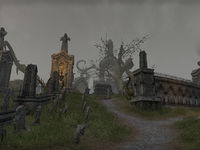
Necromancers have typically had to operate underground in High Rock, as the citizenry generally find it despicable. Nevertheless, travellers might find themselves at the mercy of a necromancer if they're unwary. The so-called Gravesingers, the most powerful of the Witchmen of High Rock, are said to have an extraordinary talent for controlling the dead.[44] During the Alliance War circa 2E 582, one of these Gravesingers, known as Angof, defiled Cath Bedraud, the great cemetery of Breton nobility,[62] and sought to take over all of Glenumbra. The Lion Guard of the Daggerfall Covenant, which was staunchly opposed to necromancy, eventually succeeded in driving back and defeating Angof. A group of necromancers trafficking in bodies on the island of Betnikh were also cast down around this time.[45]
Nevertheless, necromancy would plague High Rock for centuries to come. In 3E 253, the people of Dwynnen found themselves under the heel of a lich and his hordes of undead, though he was famously defeated by Othrok, the future Baron of the land. In 3E 267, Baron Othrok led a coalition of High Rock nations to defeat the Camoran Usurper, whose undead armies had been laying waste to western Tamriel for over a decade.[63]
Long-standing tradition mandates the cremation of most Breton dead, especially in northern High Rock. People in the south, however, often follow the Imperial custom of having a burial tomb, which means there are cemeteries, like Cath Bedraud, which can be exploited by necromancers. High Rock is prone to war, and many practitioners find their resources on the battlefields.[27] The sewers of Wayrest are also said to cater to the black market necromancy trade.[64]
Breton folklore does not attribute every spirit wandering their land to an act of necromancy. "Hauntings" are thought to occur when a person died and their spirit simply did not want to leave. They are considered common in some locales, such as the moors of Glenumbra.[65]
Some among the ancient Druids of Galen practiced necromancy as a legitimate venue of faith, as it is a focus on the end of Y'ffre's blessing of life.[66]
Morrowind[edit]
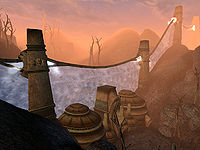
Because of their traditional practices of ancestor worship, the Dunmer vehemently denounce necromancy as pure evil, and it was outlawed in their ancient homeland of Morrowind.[27] However, the human races of Tamriel often associate their ancestor worship and spirit magic with necromancy, which is at least partly responsible for the dark reputation of Dunmer throughout the continent. The Dunmer view this belief as an ignorant human misconception, for necromancy outside the acceptable clan rituals is considered abhorrent in Morrowind.[67][nb 5]
This distinction the Dunmer made was essentially meaningless to the human races, as the Dunmer considered them and some other beast races to be little more than animals. While the Dunmer considered the necromantic manipulation of another Dunmer abhorrent, they did not prohibit the practice of necromancy upon human remains, or on the remains of any animal, bird, or insect. The Telvanni, in particular, became renowned for their mastery of necromancy, though it is said even they will not defile the corpse of a fellow Dunmer.[67] Certain Dunmer have their skin covered in magic script seen as white tattoos, which are wards against the undead.[UOL 1]
Under the Third Empire, Imperial officials recognized the practices of Dunmeri ancestor veneration and spirit magic as a religion, and protected their freedom to pursue such practices so long as they did not threaten the security of the Empire. Privately, most Imperial officials and traders purportedly believed the Dunmeri practices were necromantic, or at least barbaric. Over the course of the Third Era, Dunmeri views on necromancy evolved. By the end of the era, the practice of necromancy upon any of the "accepted" races was generally viewed as an abomination.[67] Circa 3E 427, Morrowind was the only province in which necromancy was outlawed. However, necromancy remained viable in the province for a time due to the Dunmeri practice of slavery, which had long allowed necromancers in Morrowind to obtain as many fresh bodies as they could afford.[27]
Orsinium[edit]
Orc corpses are highly sought after by necromancers for their durable skin and strong bones. A group of necromancers actually tried to establish a trade in Orcish corpses with Orsinium near the end of the Third Era, though it's unknown what kind of reception they received.[27]
Skyrim[edit]
In Skyrim, necromancers often find it relatively easy to operate. This is because the inhospitable terrain provides many isolated places to work, and the cold helps preserve bodies (that is, if they can be found in the snow).[27] While the general populace in modern times seems as opposed to necromancy as in any other province, this was not always the case among the Nords, and the land has had a long and complicated history with necromancy.[nb 1][nb 6]
In ancient Skyrim, the mighty Dragon Priests of the Dragon Cult buried their followers with them, conscripting them through necromantic rituals to serve them in death. Every night, a different shift of draugr rise to prostrate themselves before their master, transferring their life force in order to preserve him, and then return to slumber and recoup their own undead energy.[68] These "restless" draugr are considered somewhat different from other draugr which have been raised by a necromancer (the term "draugr" can be used to refer generally to any Nord undead).[62] This practice of binding servants to their master in death was apparently abandoned by the Nords following the defeat of the Dragon Cult in the Merethic Era, which was eventually eradicated in 1E 140.[69][70][44] The ancient Nords were also known to encased tombs with an enchanted form of ice known as Stalhrim to protect corpses against necromancy, however this practice also fell out of favor.[71][72] Despite this, Nords apparently continued to inter their dead in much the same way. The many well-preserved bodies in barrows all over Nordic lands are essentially treasure troves for many enterprising necromancers, who can command even the restless draugr by imbuing them with loyal spirits.
In modern times, necromancy is practiced in secret by many outlaws. Coming across a group of necromancers in some secluded cave or barrow is one of the many hazards any adventurer must eventually face in Skyrim. And at the prestigious College of Winterhold, it is even considered a legitimate arcane study, provided it is done discreetly and in accordance with the College's rules.[69]
During the War of the Red Diamond, Potema, the Wolf Queen of Solitude, turned her kingdom into a "land of death". She and her necromancers raised armies of undead from their fallen enemies and launched assault after assault on the Empire until she was finally vanquished in 3E 137.[13] Circa 4E 201, a cadre of necromancers attempted to summon and bind her spirit, but their efforts were foiled by the Dragonborn. The extraordinarily powerful spirit of the Wolf Queen was banished from the land before she could visit any further harm on the mortal world.[69]
As noted elsewhere, the Reachmen have a long history with necromancy unto themselves (though it has purportedly been forbidden in the past by some tribes).[73] Reachmen are often referred to as the Witchmen of High Rock, a name given to them due to their use of dark "Reach-magic".[74] Although Hircine is believed to be the source of the dark nature magic used by Reachman hedge wizards,[75] Molag Bal can grant a similar power to gravesingers. The name "gravesinger" is given to some Reachman necromancers who broker deals with Bal[76] in exchange for the power to command the loathsome dead.[77] Indeed, gravesingers can command corpses by planting the seeds of foul vines in their victims' bodies. Molag Bal's "gifts" may leave a gravesinger's body in a state of decay.[78]
Summerset Isles & Thras[edit]
The Summerset Isles was the original homeland of not only Mannimarco, but the Direnni clan of Altmer who are remembered as among the first to unlock the secrets of summoning souls. Nevertheless, the land of the Altmer is arguably even less hospitable to necromancers than Valenwood. A few elite Altmer are allowed some study of necromancy, but their research seems to be centered around the extension of mortal lifespans, rather than the more conventional uses of necromancy.[27] Regardless, these sanctioned necromancers are understood to be exceptions to a very strict rule. Any investigation into soul manipulation, including soul trapping, was considered akin to necromancy and thus forbidden.[5] Unsanctioned necromancy in the Isles is subject to the worst possible punishments.[27][79]
The Altmeri animosity for necromancy was perhaps intensified by their long struggles against the Sload of Thras, who long used their mastery of the Dark Arts to inflict horrors upon the Isles. Virtually every story or rumor about them relates to necromancy in some way. When the Redguards came to Tamriel in 1E 808, they brought with them a tradition of burying their criminals on islands off their shore. The Sload took advantage of these graveyards off the coast, turning them into laboratories for their necromancy. The Redguards pushed back against the invaders, but reports of Sload living near settled lands from Stros M'Kai to Abibon-Gora surfaced well into the Third Era.[80] Sload merchants were known to buy slaves in Tear, and there were even rumors of Sload airships which carried corpses from Senchal around this time. Due to their interest in Tamrielic corpses, it's speculated that the Sload, similar to the Dunmer, refrain from practicing necromancy on other members of their race.[27][nb 7]
Valenwood[edit]
The Bosmer of Valenwood are said to be extremely intolerant of necromancy. Further, though they do not typically practice Arkay's rituals to protect the dead against necromancers, their practice of ritual cannibalism reduces the availability of corpses, making Valenwood a particularly difficult place for necromancers to operate.[27] Their animosity for necromancy may be exaggerated, as many individuals show little concern over the reanimation of the dead.[81]
Long ago, when many Ayleids lived in Valenwood, they established the city of Hectahame, which was built on a site of immense power, the Heart of Valenwood. A necromancer whose name has been lost to history twisted the life-giving power of the Heart to raise a horde of undead so powerful that the city had to be sealed off in order to contain it.[82] In 3E 249, the Camoran Usurper was able to collect a great army of daedra and undead in Valenwood, and took over the province in just two years.[83][84]
Other Realms[edit]
Coldharbour[edit]
During the Planemeld of the Interregnum, Coldharbour, the Daedric Realm of Molag Bal, became the staging ground for Mannimarco's necromantic assault on Tamriel. The Castle of the Worm, built by soulless slaves in the realm, was the final stop for countless innocents before their souls were stolen and they too became undead slaves.[45]
The Necromancer's Moon[edit]
Following the Warp in the West, the Order of the Black Worm came to believe that Mannimarco, their King of Worms, had ascended to become the God of Worms, as represented by the Necromancer's Moon, or the Revenant. The Order held that he would deliver them from the Day of Reckoning, and established altars that, when struck by the light of the Necromancer's Moon, converted grand soul gems into black ones that are capable of trapping the soul of a sentient mortal.[47]
The Shivering Isles[edit]
Shivering Isles of Sheogorath, Daedric Prince of Madness, had its own style of necromancy and undead. Unique, shabbily-assembled skeletons of unknown origin called shambles are common in the many ruins in the Isles. One inhabitant, Relmyna Verenim, conducted necromantic studies on the Isles for years. She showed great skill in creating flesh atronachs. She was responsible for creating the first and second Gatekeeper, a giant flesh atronach charged with guarding the entrance to the Isles. Much of her work focused on the physical and psychological anguish which she was able to induce in her subjects. She dismembered them in various ways before resurrecting them and forcing them into combat, over and over again. She concluded that the effect of dismemberment was inconsistent within species, writing, "Whether beast or man, the removal of a limb, be it functional as a hand, or peripheral as a tail, has varying effects on the subject, having to do more with individual temperament than any biological or cultural endowment." Her study evidently had an enormous sample size.[85] "Reptilian Appetite Conditioning" involved forcing a close, seemingly familial bond to form between reptiles of different species, and then attempting to get them to kill and eat each other.[86] "Project Hound's Blood" involved the addition of zombie blood to hounds to make them more ferocious.[87] In another research project, she tested the pain tolerance of pregnant females, eventually ripping them apart only to resurrect them again.[88] She planned to make a guidebook on how removing bodily appendages from the population at large could result in a better society.[85]
The Soul Cairn[edit]
Necromancers have been known to strike deals with the Ideal Masters of the Soul Cairn. In return for souls, the necromancers are given the ability to summon armies of undead from the realm, although they often fall prey to the Masters and end up trapped in the realm themselves.[89]
Gallery[edit]
-
The Necromancer's Amulet (Oblivion)
-
A Daggerfall Covenant necromancer (ESO)
Notes[edit]
See Also[edit]
- For game-specific information, see the Arena, Daggerfall, Oblivion, Skyrim, Elder Scrolls Online
 , and Blades articles.
, and Blades articles. - Blackmarrow Cult
Books[edit]
- An Affair with Death by Mirise Dres — A necromancer tells of their first encounter with death
- Ancestors and the Dunmer — An outdated guide for foreign visitors to Morrowind
- Arkay the Enemy by KW — Instructions for the faithful to foil Arkay
- Arondil's Journal by Arondil — The journal of Arondil's journey from studying necromancy, to creating an army of undead creatures.
- The Art and the Madness v.1 by The Hollow Voice — On the necessity of fresh corpses for most necromancers
- Ascendancy: Pathway to Lichdom by Gullveig the Ascendant — A short guide detailing the steps required to become a lich
- The Black Arts On Trial by Hannibal Traven, Archmagister of the Mages Guild — A summary of the debate which led to the Mages Guild resolution on Necromancy
- Blasphemous Revenants — A call for the destruction of all vampires and those who follow them!
- Civility and Etiquette V. 5: Undead by Coristir — An Altmer guidebook outlining the correct social protocols when dealing with the undead
- Corpse Preparation — How to obtain and prepare a corpse for necromantic purposes
- Epode of the Ansei Wards by Weltan of Sentinel — A poem on the self-sacrifice of three Ansei
- The Exodus by Waughin Jarth — The tale of a couple's desperate bid to save their only child
- Experiment Journal — Necromantic research on the creation of ice-based thralls
- Guild Memo on Soul-Trapping by Vanus Galerion, Archmagister Emeritus — Vanus Galerion's proposal on the use of soul-trapping magics
- The Legend of Vastarie by Afwa, a Student and Friend — On one of the most infamous necromancers of the Second Era
- Louna's Grimoire: Corpse Cough by Louna Darkblood — A necromantic recipe
- Mal Sorra's Curse — The tale of a powerful necromancer and her chilling fate
- Mannimarco, King of Worms by Horicles — Biography of Mannimarco, the leader of Necromancers, in verse
- N'Gasta! Kvata! Kvakis! by N'Gasta — An obscure text written in the language of the Sload by a necromancer
- N'Gasta's Spellbook by N'Gasta — A ritual that summons a portal to Clavicus Vile's realm
- Necromancer's Moon
- Necromancy in Modern Tamriel by Wafimeles Masteret (Lorekeeper) — A treatise on the current state of necromancy in Tamriel
- Necromancy: The Great Debate — A criticism against the Mages Guild views on Necromancy
- On Necromancy by V — A short instructional guide on necromancy
- On Summoning Skeletons — An instructional guide on acquiring and reanimating skeletons
- The Order of the Black Worm by Evoker Brucille — Mages Guild Report: The Order of the Black Worm
- Palla by Vojne Mierstyyd — A conjurer's tragic infatuation with a dead woman
- The Path of Transcendence by Celedaen — A necromancer's diary of efforts at becoming a lich
- Practical Necromancy — An instructional guide on tethering and enslaving spirits
- Sacrilege and Mayhem in the Alik'r by Doctor Tazhim of the Bureau of Outlander Affairs — A Report to the Royal Family of Hegathe
- Schemes of the Reachmage by Gabrielle Benele, Wizard — A Mages Guild record of findings on Angof the Gravesinger
- Sorcery is Not Necromancy! by Divayth Fyr — A famed wizard's objections to being labeled a necromancer
- Souls, Black and White — A scholar's look at the souls of man and beast
- Tome of Unlife — A mysterious, blood-stained lexicon belonging to Lorgren Benirus
- Unhallowed Legions by Phrastus of Elinhir — A study into the undead of Tamriel
- Worm Saga by Mannimarco — Rhyming autobiography of Mannimarco
- Zombies: Further Experiments — Research notes on creating autonomous zombies
References[edit]
- ^ a b c d e The Black Arts On Trial — Hannibal Traven, Archmagister of the Mages Guild
- ^ a b c d e Unhallowed Legions — Phrastus of Elinhir
- ^ Durnehviir's dialogue in Skyrim
- ^ Note from Bakarak — Bakarak
- ^ a b Telenger the Artificer Answers Your Questions — Telenger the Artificer
- ^ Serana's dialogue in Skyrim: Dawnguard
- ^ Faralda's dialogue in Skyrim
- ^ Necromancer class description in ESO
- ^ Schemes of the Reachmage — Gabrielle Benele, Wizard
- ^ a b c The Legend of Vastarie — Afwa, a Student and Friend
- ^ a b Necromancy: The Great Debate
- ^ a b Benevolent Necromancy, it Exists — Yisareh of the Undaunted
- ^ a b Biography of the Wolf Queen — Katar Eriphanes
- ^ a b Aldimion's Journal — Aldimion
- ^ Blasphemous Revenants
- ^ Vampires of Vvardenfell, v I
- ^ Dialogue in Morrowind
- ^ Spirit of the Daedra
- ^ Souls, Black and White
- ^ The Art and the Madness v.1 — The Hollow Voice
- ^ Fennorian's dialogue in ESO
- ^ Mercano's Journal — Mercano
- ^ Journal of Master Pellingare — Master Pellingare
- ^ Lu-ah's Journal — Lu'ah Al-Skaven
- ^ The Exodus — Waughin Jarth
- ^ On Necromancy — V
- ^ a b c d e f g h i j k l m n o p q r Corpse Preparation
- ^ On Summoning Skeletons
- ^ Reezal-Jul's Journal — Reezal-Jul
- ^ Experiment Journal
- ^ a b c d The Path of Transcendence — Celedaen
- ^ Ascendancy: Pathway to Lichdom — Gullveig the Ascendant
- ^ a b c Events of Oblivion
- ^ a b Yisareh's dialogue during Casting the Bones
- ^ The Undaunted skills Bone Shield and Necrotic Orb
- ^ Mazza-Mirri's dialogue in ESO: Elsweyr
- ^ Stone of Atonement
- ^ Stone of Banishment
- ^ Faralda's lectures in Skyrim
- ^ Arkay the Enemy — KW
- ^ The Consecrations of Arkay — Punctilius Tyrus
- ^ Galerion the Mystic — Asgrim Kolsgreg
- ^ Mannimarco, King of Worms — Horicles
- ^ a b c d e EGT — Flaccus Terentius, 2E 581
- ^ a b c Events of ESO
- ^ Guild Memo on Soul-Trapping — Vanus Galerion, Archmagister Emeritus
- ^ a b Necromancer's Moon
- ^ Bolu's dialogue in ESO: Murkmire
- ^ Reman II: The Limits of Ambition — High King Emeric
- ^ a b The Wispmother — Mathias Etienne
- ^ The Amulet of Kings — Wenengrus Monhona
- ^ Curano's Journal — Curano
- ^ Necromancy in Modern Tamriel — Wafimeles Masteret (Lorekeeper)
- ^ Chronicles of the Five Companions
- ^ Events of Arena
- ^ Jagar Tharn's dialogue in Arena
- ^ Epode of the Ansei Wards — Weltan of Sentinel
- ^ The Interment of Feremuzh
- ^ Motalion Necropolis Report — Maffud
- ^ Fahamal, Trader — Fahamal
- ^ Throne Keeper Farvad's dialogue in ESO
- ^ a b Loadings screen in ESO.
- ^ The Fall of the Usurper — Palaux Illthre
- ^ Wayrest Sewers: A Short History — Hilaire Beanique
- ^ Ghosts of Glenumbra — Jean Dutheil
- ^ Logbook of Druid Anwas — Druid Anwas
- ^ a b c Ancestors and the Dunmer
- ^ Amongst the Draugr — Bernadette Bantien, College of Winterhold
- ^ a b c Events of Skyrim
- ^ Temples of the Dragon Cult — Cirantille
- ^ Graring's dialogue in Bloodmoon.
- ^ Fall of the Snow Prince — Lokheim
- ^ Clans of the Reach: A Guide — Ehcelmo
- ^ Pocket Guide to the Empire, 1st Edition: High Rock — Imperial Geographical Society, 2E 864
- ^ Vernim Woods's loading screen in ESO
- ^ Zhagush gro-Korlag's dialogue in ESO
- ^ The Improved Emperor's Guide to Tamriel: Northern Bangkorai and the Mountains — Flaccus Terentius, 2E 581
- ^ Angof the Undying's dialogue in ESO
- ^ Aldmeri Court Transcript — Seventh Court of Aldmeri Justice
- ^ Pocket Guide to the Empire, 3rd Edition: Other Lands — Imperial Geographical Society, 3E 432
- ^ Bone Orchard Research — Bonelord Ethruin
- ^ Heart of Valenwood — Beredalmo the Signifier
- ^ Brief History of the Empire — Stronach k'Thojj III
- ^ The Refugees — Geros Albreigh
- ^ a b Experiment Log - Day 12 — Relmyna Verenim
- ^ Reptilian Appetite Conditioning — Relmyna Verenim
- ^ Project Hound's Blood - Day 7 — Relmyna Verenim
- ^ Unproductive Musings — Relmyna Verenim
- ^ Events of Dawnguard
- ^ Notes from Huleeya — Huleeya
- ^ Draugr Lord Aesliip's dialogue in Bloodmoon
Note: The following references are considered to be unofficial sources. They are included to round off this article and may not be authoritative or conclusive.
- ^ Ted Peterson's posts in Playing Houses
|
|||||||||||||||||
_15.jpg/200px-SR-npc-Bandit_(NPC)_15.jpg)
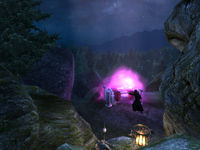
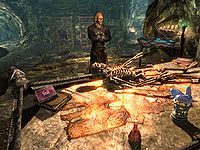

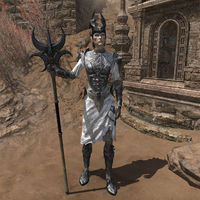
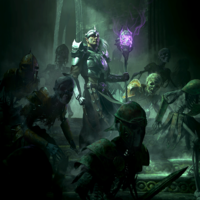
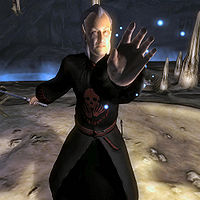
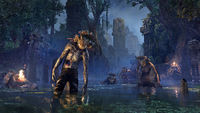
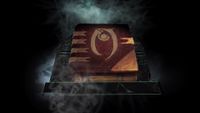
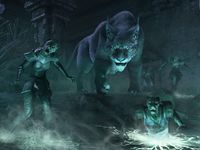
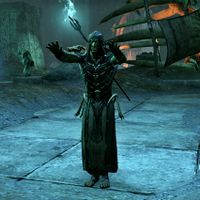

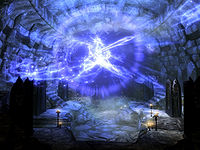
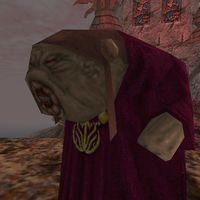
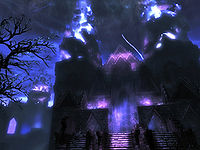
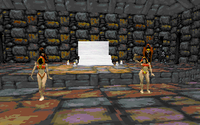
.png)
